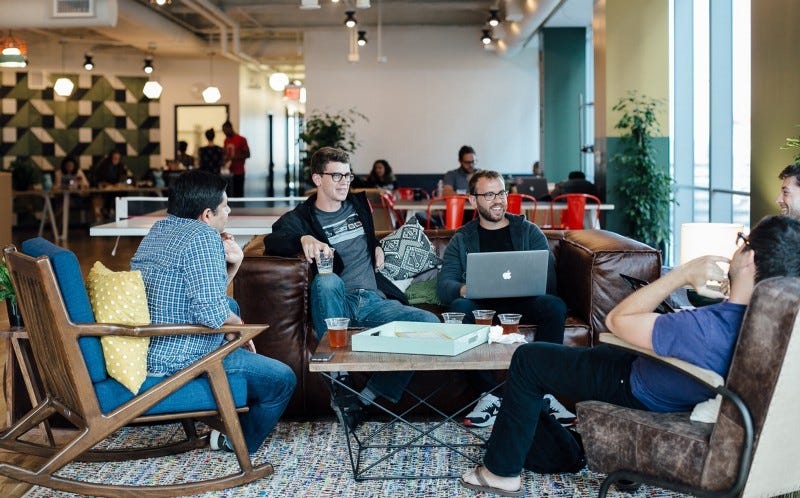WeWork and the Future of Tech-Enabled Communities
My first WeWork office in 2011 was a 4-by-8 foot, glass-walled room with 2 desks. Not much elbow room — but I loved it. With the rooftop…

My first WeWork office in 2011 was a 4-by-8 foot, glass-walled room with 2 desks. Not much elbow room — but I loved it. With the rooftop happy hours and friendly, communal vibe, it was a great place to run a startup. We had investor meetings in the screening room and recording studio.
Back then the co-working company had just 3 locations in New York. Today WeWork is valued at $20 billion and on the cover of Forbes.
As an early tenant I’ve enjoyed watching the company’s meteoric rise. Even before the sky-high valuations I was impressed with founder Adam Neumann’s drive and vision for community-building.
WeWork’s success reflects a cultural shift away from ownership and toward personalized community experiences. Just as Airbnb made home-sharing easy and fun, WeWork did the same for co-working. Both companies succeeded by recognizing that young people want to be part of vibrant communities that reflect their values.
Indeed, the two companies yesterday announced a new partnership whereby Airbnb corporate customers will be able to save a slot at the nearest WeWork office workspace when they rent a room on Airbnb’s website.
At first glance, the WeWork model of renting and upselling office space does not seem like the kind of scalable business that would justify a $20 billion valuation.
A closer look reveals a tech infrastructure with massive opportunities for scale. WeWork’s success hints at the future of the connected office:
“To make the most of every millimeter, WeWork uses 3-D scanners to measure space and builds virtual-reality models to help design each floor before turning a single screw. Heat-mapping technology tracks traffic and usage to find the right balance of shared space, desks and conference rooms.”
The company is developing a “WeOS” to turn each office into a giant connected device that adapts to each user, sends feedback to WeWork’s mission control and creates a work space that feels personally tailored to you and your style.
(The WeWork app is pretty nifty, too. I’ve already connected with people in WeWork’s LA network who share my love for film, tech, and comedy.)
Young people have never been hungrier for community. Even as smartphones increase social isolation and put a strain on in-person interactions, technology creates new opportunities for connecting people in the physical world.
Successful startups will be ones that use technology to create personalized real-world communities. And there’s a good chance those startups find their first customers in a WeWork office space.


